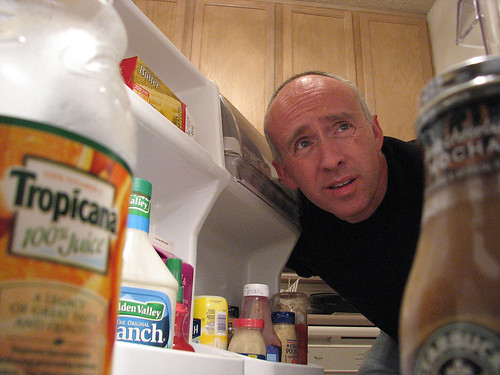
Thus, I traveled half way around the world to experience my first cup of drinking chocolate only to find that a luscious cup was always available in my own backyard of San Francisco. I just never knew it.
A few weeks back our summer staff at camp wanted me to take them on a San Francisco tourist outing. Cable cars, Chinatown, Pier 39, Fisherman's Wharf, and of course, Ghirardelli Square were on the agenda.
Ghirardelli Square is known the world over as THE San Francisco chocolate destination and is the company's flagship retail location. Ghirardelli Chocolate Company is the second-oldest chocolate company in the US, founded in 1852 by Italian chocolatier, Domingo Ghirardelli. [1] In 1893, the company was expanding and relocated its operation to what is now Ghirardelli Square. San Francisco declared the site an official city landmark in 1965. In 1967, the company moved its production facilities to San Leandro, and turned the buildings and original chocolate making equipment into a popular tourist destination.
Because Ghirardelli's ice cream is exclusively made from cow's milk, I wasn't sure what I would have during our tourist visit. I was thinking a brownie (as chocolate baked goods are my vegan exception), but when I saw "Decadent Drinking Chocolate" on the menu, I immediately knew what I wanted. And after a cold windy day along the bay, I knew a cup of warm chocolate would definitely hit the spot. And it did.
Though I was the first to order, my afternoon dessert was the last to arrive but I knew the wait would be worth it.
I was surprised that I could taste the difference between the LaVerna drinking chocolate and the one from Ghirardelli. Though LaVerna's drink was darker in color and had a rich textured consistency, it was slightly sweeter than the cup I enjoyed at Ghirardelli, which was more milky with a subtle bitter bite. The different amount of cacao percentage is the reason for this taste difference. LaVerna's dark chocolate has 53% cacaoa as opposed to Ghirardelli's 58%.
Both of these drinking chocolates are made in the classic way, with a semi-sweet chocolate and blended with milk, as opposed to the traditional French and Belgian style which uses a 60% bittersweet or 70% extra bittersweet cacao and is finished with water. This more traditional European way is thus, non-dairy, and better corresponds to my vegan values, making my vegan-life much happier. I plan to share my bittersweet chocolate drinking experience in an upcoming blog.
Though the LaVerna drinking chocolate was sweeter, I preferred the dark rich dense texture, over the lighter more liquidy version at Ghirardelli. There was a depth in the overall flavor and experience to the cup at LaVerna that I truly enjoyed and savored. While I did appreciate the bitter chocolate edge at Ghirardelli, it was however more milky, smooth, and monotone in flavor. Even though I took my time sipping it, the brew was gone way too fast, and without swishing it around in my mouth, hard to fully enjoy. LaVerna's drinking chocolate, however, served with a small spoon, lasted for a while, and was definitely more dessert than drink. Ghirardelli's on the other hand was more drink than dessert.
Overall I did enjoy my cup of drinking chocolate at Ghirardelli, and it did live up to its menu description providing an "intense chocolate flavor in every rich velvety sip." At $4.95, it may be more expensive than my 2 euro cup at LaVerna, but at least I don't have to fly to Italy to indulge.
Footnote:
[1] Baker's Chocolate is the oldest chocolate company in America, founded in 1780.
Also note, the 14th annual Ghirardelli Chocolate Festival will be held on September 12-13, 2009. I'm planning to take in the experience on Saturday the 12th. Email me if you are interested. $20 gets you 15 tastings. A real deal, if you ask me!









